1 of 10
Download to read offline
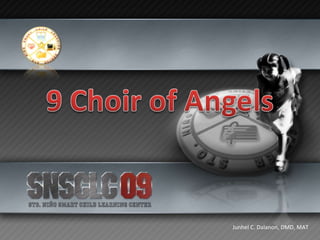

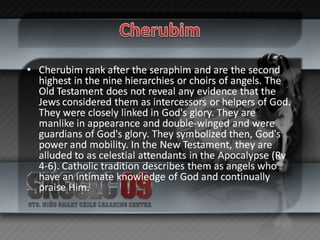
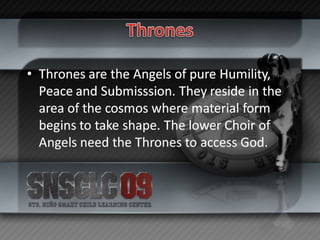
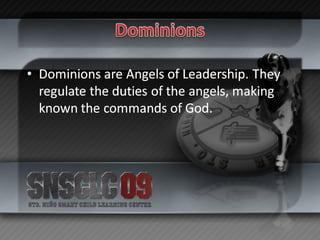
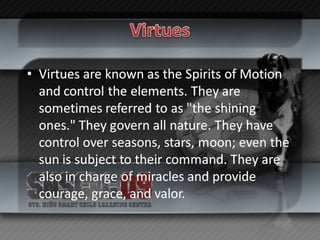
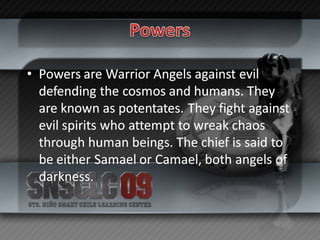
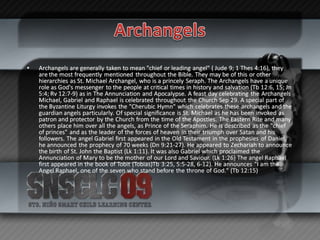
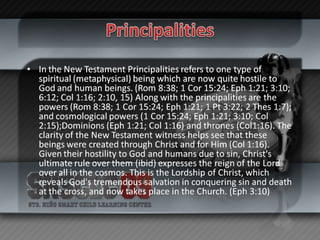

Ad
Recommended
Identity: Future directions (David Orrell, Eduserv Foundation)
Identity: Future directions (David Orrell, Eduserv Foundation)JISC.AM
╠²
OpenID is an identity network that allows users to control their online identity and choose who holds their personal information. It uses existing web technologies to provide a consistent login process across sites without requiring each site to separately verify a user's identity. While some users may not see the need to change from usernames and passwords, OpenID could significantly improve online security by reducing identity theft and phishing.Colleagues
ColleaguesALA - American Library Association
╠²
The document provides tips for networking at ALA conferences. It suggests meeting people at programs, receptions, and even in line for the shuttle bus. People at the conference likely share similar interests in libraries. It recommends attending social events and Birds of a Feather lunches to meet others, and exchanging contact information to continue conversations after the conference through ALA social networks and groups.Cognotes Saturday 8 Jan at alamw11
Cognotes Saturday 8 Jan at alamw11ALA - American Library Association
╠²
The document outlines the schedule and highlights of the American Library Association's 2011 Midwinter Meeting in San Diego, featuring Ted Danson as the keynote speaker and several notable author events. It includes details about exhibit hours, canceled sessions, and initiatives to uphold intellectual freedom in libraries. The conference emphasizes the role of libraries in public access to information and features various activities including author signings and award receptions.Vision andprioritiesjun02
Vision andprioritiesjun02Clifford Stone
╠²
This document discusses NASA's vision and priorities for exploration, including exploring life in the universe. It outlines three "grand challenges" - understanding how life arose on Earth, if we are alone in the universe, and where life is heading. The document discusses using both robotic and human exploration to make faster discoveries. It provides examples of how technologies like electric propulsion and nuclear propulsion could enable missions to destinations like Mars and beyond. Overall, the document advocates for technology investment to enable more ambitious exploration goals.IFLA Preview from American Libraries
IFLA Preview from American LibrariesALA - American Library Association
╠²
The document is the Summer 2011 edition of the American Library Association's magazine, highlighting the organization's international reach and resources for global librarians. It covers topics such as membership benefits, online learning opportunities, advocacy efforts, and the importance of connecting librarians worldwide. Additionally, it includes information about events, initiatives, and various programs aimed at enhancing library services and professional development.Organizational Development
Organizational DevelopmentJunhel Dalanon
╠²
The document discusses organizational development and different types of organizational structures. It outlines the key characteristics and advantages and disadvantages of line, line and staff, and matrix organizations. It then discusses important principles of organization, including consideration of objectives, division of work, delegation of authority, parity of responsibility and authority, span of control, unity of command, coordination, efficiency, separation of line and staff functions, consideration of policies and procedures, job groupings, flexibility, communication, and balance. Finally, it outlines the steps in organizational development, including defining objectives, listing activities, determining structure, securing personnel, considering resources, preparing and implementing the organization, and conducting periodic audits.Information and Communication Technology
Information and Communication TechnologyJunhel Dalanon
╠²
ICT refers to technologies used to transmit, store, create, display, share or exchange information electronically. This includes technologies like radio, TV, phones, computers, and services like videoconferencing and email.
Information technology is the study, design, development, implementation, support or management of computer-based information systems, particularly software applications and computer hardware.
When implementing ICT in education, important considerations include educational goals, professional development, student-to-computer ratio, connectivity, physical space, electrical system, and technical support.14 Holy Helpers
14 Holy HelpersJunhel Dalanon
╠²
Saint Blaise was a physician and bishop of Sebastea who was martyred by being beaten with iron combs and beheaded. He is the patron saint of wool combers and is associated with blessing throats on February 3rd. Saint Catherine of Alexandria was a Christian martyr and scholar who was tortured on a spiked wheel and beheaded. Saint Christopher is venerated by Catholics and Orthodox as a martyr killed under Roman emperor Decius, though the details of his life are uncertain.Levels Of Reverence
Levels Of ReverenceJunhel Dalanon
╠²
The document discusses the different levels of reverence offered in Christianity. Latria refers to the supreme honor and worship due to God alone. Dulia refers to the honor and veneration given to the saints and angels but is distinct from and lesser than Latria. A further distinction is made between Dulia, the honor given to persons, and the honor given to inanimate objects associated with them. The Blessed Virgin Mary is given a special veneration called Hyperdulia, which is higher than Dulia but still less than Latria reserved for God.7 Sorrows Of Our Lady
7 Sorrows Of Our LadyJunhel Dalanon
╠²
This document discusses the immense sorrow experienced by Mary, the mother of Jesus, throughout key events in his life according to the Christian gospels. It describes Mary's grief at Jesus' presentation at the temple when Simeon prophesied his suffering, her fear and hardship when the family fled to Egypt to escape Herod, her panic and three days of searching when Jesus went missing at age 12, her anguish witnessing his condemnation and crucifixion, and her mourning upon his death and burial. The document aims to convey the depth of Mary's sorrow and suffering as Jesus' mother and encourage reflection on one's own sins which cause her pain.Nutrient Cycles
Nutrient CyclesJunhel Dalanon
╠²
The document discusses nutrient cycles at multiple levels - within ecosystems, globally, and how they interconnect. At the ecosystem level, nutrients cycle between living organisms and non-living components like soil, water and atmosphere through various processes. Globally, nutrient loss from one ecosystem becomes a gain for others, and the cycling of elements like carbon, oxygen, nitrogen and water occur at the planetary scale through the biosphere, atmosphere and lithosphere. Human activities are increasingly impacting global nutrient cycles.Water & Soil Conservation
Water & Soil ConservationJunhel Dalanon
╠²
Water is essential for life and makes up most of the Earth's surface and living things. It is involved in critical processes like transporting nutrients and regulating temperatures. However, water quality and availability are threatened by pollution, erosion, and improper land management. Conservation practices that protect soil and water resources, like crop rotation, terracing, and limiting runoff, are needed to ensure sustainable access to fresh water.Sun
SunJunhel Dalanon
╠²
The Sun is a star located at the center of the Solar System. It contains over 99% of the mass of the entire Solar System. The Sun is composed primarily of hydrogen and helium and has a diameter of approximately 1.4 million km. It emits light and heat energy that supports life on Earth and is the dominant factor in Earth's climate and weather.Telescopes
TelescopesJunhel Dalanon
╠²
The document discusses different types of telescopes and factors that impact their performance. It describes how the size of a telescope's aperture impacts its light-gathering power and angular resolution. Larger telescopes are able to see fainter objects but the atmosphere limits resolution to around 1 arcsecond. Techniques like adaptive optics and interferometry are discussed as ways to overcome atmospheric limitations and achieve higher resolutions than single large telescopes.Moon
MoonJunhel Dalanon
╠²
- The Moon is Earth's only natural satellite and orbits Earth every 27.3 days. It has a diameter of 3,474 km and its surface area is less than 1/10 that of Earth.
- The near side of the Moon always faces Earth due to tidal locking. The far side was first photographed by the Soviet probe Luna 3 in 1959 and lacks the large dark basins (maria) found on the near side.
- Internally, the Moon is differentiated with a crust, mantle, and small core. Its crust is largely composed of oxygen, silicon, magnesium, iron, calcium, and aluminum.Ecosystem
EcosystemJunhel Dalanon
╠²
The document defines key terms related to ecosystems, including ecosystem, biotic and abiotic components, trophic levels, and food webs. It explains that an ecosystem is the interaction between a living community and its non-living environment. Ecosystems have biotic components like producers, primary consumers, and decomposers, as well as abiotic components like sunlight and inorganic materials. Energy and nutrients flow through ecosystems via food chains and food webs that link organisms across trophic levels.Ecology
EcologyJunhel Dalanon
╠²
The document discusses key concepts in ecology including:
1) Ecology is the study of living organisms and their interactions with the non-living environment. It examines different levels of organization from organisms to populations, communities, ecosystems, biomes, and the biosphere.
2) Ecologists study how energy flows through ecosystems from the sun and how matter cycles through different abiotic and biotic components.
3) Ecosystems depend on energy from the sun, cycling of matter, and gravity to sustain life on Earth.Nervous System
Nervous SystemJunhel Dalanon
╠²
The nerve cell is the basic unit of communication in the vertebrate nervous system. A neuron consists of a cell body with dendrites that receive signals and a long axon that transmits impulses. An action potential is generated when the voltage across the membrane is briefly switched and moves down the axon. Neurotransmitters are released at the synaptic cleft between neurons to transmit signals to the next cell. The nervous system is divided into the central nervous system (brain and spinal cord) and peripheral nervous system. Sensory neurons carry signals to the CNS while motor neurons carry signals away from the CNS to effector cells like muscles.Endocrine System
Endocrine SystemJunhel Dalanon
╠²
The document discusses the endocrine system, which controls many body functions by releasing hormones into the blood. It describes several endocrine glands such as the pituitary gland, thyroid gland, pancreas, adrenal glands, gonads and ovaries. It also discusses endocrine emergencies like diabetes mellitus and the role of insulin in facilitating glucose entry into cells.Earth History
Earth HistoryJunhel Dalanon
╠²
The document summarizes the major eras of geological time from the formation of the Earth 4.6 billion years ago to the present. It outlines four eras: Precambrian, Paleozoic, Mesozoic, and Cenozoic. The Precambrian era saw the earliest life forms and atmosphere. The Paleozoic era brought marine diversity and early land plants and animals. Dinosaurs dominated during the Mesozoic before an asteroid caused their extinction. The current Cenozoic era began after this mass extinction and saw the rise of mammals and modern humans.Biomes
BiomesJunhel Dalanon
╠²
There are 8 major biomes on Earth: tropical rainforests, tropical savannas, deserts, chaparral, grasslands, temperate deciduous forests, temperate boreal forests, and tundra. Biomes are defined by similar climate conditions and types of plants and animals. Climate, especially temperature and rainfall, are the primary factors determining the location and characteristics of different biomes. Latitude and elevation also impact climate and therefore affect biome distribution globally.Spanish American War
Spanish American WarJunhel Dalanon
╠²
The document summarizes key events in Philippine history from the Spanish-American War to the establishment of the Philippine Commonwealth. It describes how the US helped Cuba gain independence from Spain, leading to the Spanish-American War. The US then gained control of Guam, Puerto Rico, and the Philippines. The Battle of Manila Bay and siege of Manila weakened Spanish control, and the Malolos Congress established the first Philippine Republic. However, hostilities grew between Filipino and American forces, contributing to the end of the Philippine Revolution. The Commonwealth era was then established to transition the Philippines to independence.The Secularization Of Priests During The Spanish Period
The Secularization Of Priests During The Spanish PeriodJunhel Dalanon
╠²
The Suez Canal, which opened in 1869, connected the Red Sea and Mediterranean Sea, shortening travel time between places like Barcelona and Manila from 3 months to 32 days. This made trade in the Philippines more profitable and brought foreign merchants and progressive ideas. However, it also sparked desires for freedom and improvement. There was also a controversy between regular priests belonging to religious orders and secular priests over authority in parishes. In 1774, the Archbishop assigned secular priests to replace regular priests who refused bishops' visits to parishes, though regulars considered Filipinos unfit to be priests. The issue took on racial overtones as Spaniards favored their own regular priests over Filipinos.The Galleon Trade
The Galleon TradeJunhel Dalanon
╠²
The document discusses the history of trade in the Philippines under Spanish colonial rule. It describes how the Spaniards established the Manila-Acapulco Galleon Trade in the 16th century, which became the main trade route between Mexico and the Philippines. It also allowed for liberal ideas to enter the country. Later, Governor General Jose Basco y Vargas implemented economic reforms in the late 18th century to make the Philippines more self-sufficient and established a tobacco monopoly to raise government revenues.Spanish Expeditions To The Philippines
Spanish Expeditions To The PhilippinesJunhel Dalanon
╠²
1) Ferdinand Magellan led the first circumnavigation of the globe from 1519-1522 while trying to find a western route to the Spice Islands.
2) Magellan was killed in the Philippines in 1521 during a battle with Lapu-Lapu, but Juan Sebastian Elcano eventually completed the journey, becoming the first to circumnavigate the globe.
3) Spain then sent several expeditions to colonize the Philippines between 1525-1564, with Miguel Lopez de Legazpi finally succeeding in 1565 by establishing settlements in Cebu and Manila with the help of alliances with local leaders.Spain As Colonial Masters
Spain As Colonial MastersJunhel Dalanon
╠²
1) Spain established a centralized colonial government in the Philippines headed by a governor general who oversaw local governments administering provinces, cities, towns, and municipalities.
2) The governor general implemented royal decrees from Spain and had broad administrative and legislative powers, though was checked by the Royal Audiencia advisory council.
3) Local governments included alcadias and corregimientos governing peaceful and unrest provinces respectively, each led by an official managing operations and tax collection.Propaganda
PropagandaJunhel Dalanon
╠²
The document summarizes the Propaganda Movement in the Philippines which aimed to seek reforms from Spain and end abuses by Spanish colonizers. It discusses key events like the execution of priests Gomburza which inspired the movement. The movement's leaders like Rizal, Lopez Jaena and del Pilar are described along with their publications that criticized Spain. The establishment of the civic organization La Liga Filipina by Rizal and its goals are also summarized.Philippines
PhilippinesJunhel Dalanon
╠²
The document provides a detailed overview of Philippine history from pre-Spanish times through the modern era. It covers early inhabitants and trade, Spanish colonial rule from the 16th century, the American colonial period starting in 1898, Japanese occupation during World War 2, independence in 1946, the martial law era under Ferdinand Marcos, and contemporary politics up to 2010. Key events, leaders, and political developments are discussed for each major time period.How to Manage Different Customer Addresses in Odoo 18 Accounting
How to Manage Different Customer Addresses in Odoo 18 AccountingCeline George
╠²
A business often have customers with multiple locations such as office, warehouse, home addresses and this feature allows us to associate with different addresses with each customer streamlining the process of creating sales order invoices and delivery orders.Ray Dalio How Countries go Broke the Big Cycle
Ray Dalio How Countries go Broke the Big CycleDadang Solihin
╠²
A complete and practical understanding of the Big Debt Cycle. A much more practical understanding of how supply and demand really work compared to the conventional economic thinking. A complete and practical understanding of the Overall Big Cycle, which is driven by the Big Debt Cycle and the other major cycles, including the big political cycle within countries that changes political orders and the big geopolitical cycle that changes world orders.More Related Content
More from Junhel Dalanon (20)
Levels Of Reverence
Levels Of ReverenceJunhel Dalanon
╠²
The document discusses the different levels of reverence offered in Christianity. Latria refers to the supreme honor and worship due to God alone. Dulia refers to the honor and veneration given to the saints and angels but is distinct from and lesser than Latria. A further distinction is made between Dulia, the honor given to persons, and the honor given to inanimate objects associated with them. The Blessed Virgin Mary is given a special veneration called Hyperdulia, which is higher than Dulia but still less than Latria reserved for God.7 Sorrows Of Our Lady
7 Sorrows Of Our LadyJunhel Dalanon
╠²
This document discusses the immense sorrow experienced by Mary, the mother of Jesus, throughout key events in his life according to the Christian gospels. It describes Mary's grief at Jesus' presentation at the temple when Simeon prophesied his suffering, her fear and hardship when the family fled to Egypt to escape Herod, her panic and three days of searching when Jesus went missing at age 12, her anguish witnessing his condemnation and crucifixion, and her mourning upon his death and burial. The document aims to convey the depth of Mary's sorrow and suffering as Jesus' mother and encourage reflection on one's own sins which cause her pain.Nutrient Cycles
Nutrient CyclesJunhel Dalanon
╠²
The document discusses nutrient cycles at multiple levels - within ecosystems, globally, and how they interconnect. At the ecosystem level, nutrients cycle between living organisms and non-living components like soil, water and atmosphere through various processes. Globally, nutrient loss from one ecosystem becomes a gain for others, and the cycling of elements like carbon, oxygen, nitrogen and water occur at the planetary scale through the biosphere, atmosphere and lithosphere. Human activities are increasingly impacting global nutrient cycles.Water & Soil Conservation
Water & Soil ConservationJunhel Dalanon
╠²
Water is essential for life and makes up most of the Earth's surface and living things. It is involved in critical processes like transporting nutrients and regulating temperatures. However, water quality and availability are threatened by pollution, erosion, and improper land management. Conservation practices that protect soil and water resources, like crop rotation, terracing, and limiting runoff, are needed to ensure sustainable access to fresh water.Sun
SunJunhel Dalanon
╠²
The Sun is a star located at the center of the Solar System. It contains over 99% of the mass of the entire Solar System. The Sun is composed primarily of hydrogen and helium and has a diameter of approximately 1.4 million km. It emits light and heat energy that supports life on Earth and is the dominant factor in Earth's climate and weather.Telescopes
TelescopesJunhel Dalanon
╠²
The document discusses different types of telescopes and factors that impact their performance. It describes how the size of a telescope's aperture impacts its light-gathering power and angular resolution. Larger telescopes are able to see fainter objects but the atmosphere limits resolution to around 1 arcsecond. Techniques like adaptive optics and interferometry are discussed as ways to overcome atmospheric limitations and achieve higher resolutions than single large telescopes.Moon
MoonJunhel Dalanon
╠²
- The Moon is Earth's only natural satellite and orbits Earth every 27.3 days. It has a diameter of 3,474 km and its surface area is less than 1/10 that of Earth.
- The near side of the Moon always faces Earth due to tidal locking. The far side was first photographed by the Soviet probe Luna 3 in 1959 and lacks the large dark basins (maria) found on the near side.
- Internally, the Moon is differentiated with a crust, mantle, and small core. Its crust is largely composed of oxygen, silicon, magnesium, iron, calcium, and aluminum.Ecosystem
EcosystemJunhel Dalanon
╠²
The document defines key terms related to ecosystems, including ecosystem, biotic and abiotic components, trophic levels, and food webs. It explains that an ecosystem is the interaction between a living community and its non-living environment. Ecosystems have biotic components like producers, primary consumers, and decomposers, as well as abiotic components like sunlight and inorganic materials. Energy and nutrients flow through ecosystems via food chains and food webs that link organisms across trophic levels.Ecology
EcologyJunhel Dalanon
╠²
The document discusses key concepts in ecology including:
1) Ecology is the study of living organisms and their interactions with the non-living environment. It examines different levels of organization from organisms to populations, communities, ecosystems, biomes, and the biosphere.
2) Ecologists study how energy flows through ecosystems from the sun and how matter cycles through different abiotic and biotic components.
3) Ecosystems depend on energy from the sun, cycling of matter, and gravity to sustain life on Earth.Nervous System
Nervous SystemJunhel Dalanon
╠²
The nerve cell is the basic unit of communication in the vertebrate nervous system. A neuron consists of a cell body with dendrites that receive signals and a long axon that transmits impulses. An action potential is generated when the voltage across the membrane is briefly switched and moves down the axon. Neurotransmitters are released at the synaptic cleft between neurons to transmit signals to the next cell. The nervous system is divided into the central nervous system (brain and spinal cord) and peripheral nervous system. Sensory neurons carry signals to the CNS while motor neurons carry signals away from the CNS to effector cells like muscles.Endocrine System
Endocrine SystemJunhel Dalanon
╠²
The document discusses the endocrine system, which controls many body functions by releasing hormones into the blood. It describes several endocrine glands such as the pituitary gland, thyroid gland, pancreas, adrenal glands, gonads and ovaries. It also discusses endocrine emergencies like diabetes mellitus and the role of insulin in facilitating glucose entry into cells.Earth History
Earth HistoryJunhel Dalanon
╠²
The document summarizes the major eras of geological time from the formation of the Earth 4.6 billion years ago to the present. It outlines four eras: Precambrian, Paleozoic, Mesozoic, and Cenozoic. The Precambrian era saw the earliest life forms and atmosphere. The Paleozoic era brought marine diversity and early land plants and animals. Dinosaurs dominated during the Mesozoic before an asteroid caused their extinction. The current Cenozoic era began after this mass extinction and saw the rise of mammals and modern humans.Biomes
BiomesJunhel Dalanon
╠²
There are 8 major biomes on Earth: tropical rainforests, tropical savannas, deserts, chaparral, grasslands, temperate deciduous forests, temperate boreal forests, and tundra. Biomes are defined by similar climate conditions and types of plants and animals. Climate, especially temperature and rainfall, are the primary factors determining the location and characteristics of different biomes. Latitude and elevation also impact climate and therefore affect biome distribution globally.Spanish American War
Spanish American WarJunhel Dalanon
╠²
The document summarizes key events in Philippine history from the Spanish-American War to the establishment of the Philippine Commonwealth. It describes how the US helped Cuba gain independence from Spain, leading to the Spanish-American War. The US then gained control of Guam, Puerto Rico, and the Philippines. The Battle of Manila Bay and siege of Manila weakened Spanish control, and the Malolos Congress established the first Philippine Republic. However, hostilities grew between Filipino and American forces, contributing to the end of the Philippine Revolution. The Commonwealth era was then established to transition the Philippines to independence.The Secularization Of Priests During The Spanish Period
The Secularization Of Priests During The Spanish PeriodJunhel Dalanon
╠²
The Suez Canal, which opened in 1869, connected the Red Sea and Mediterranean Sea, shortening travel time between places like Barcelona and Manila from 3 months to 32 days. This made trade in the Philippines more profitable and brought foreign merchants and progressive ideas. However, it also sparked desires for freedom and improvement. There was also a controversy between regular priests belonging to religious orders and secular priests over authority in parishes. In 1774, the Archbishop assigned secular priests to replace regular priests who refused bishops' visits to parishes, though regulars considered Filipinos unfit to be priests. The issue took on racial overtones as Spaniards favored their own regular priests over Filipinos.The Galleon Trade
The Galleon TradeJunhel Dalanon
╠²
The document discusses the history of trade in the Philippines under Spanish colonial rule. It describes how the Spaniards established the Manila-Acapulco Galleon Trade in the 16th century, which became the main trade route between Mexico and the Philippines. It also allowed for liberal ideas to enter the country. Later, Governor General Jose Basco y Vargas implemented economic reforms in the late 18th century to make the Philippines more self-sufficient and established a tobacco monopoly to raise government revenues.Spanish Expeditions To The Philippines
Spanish Expeditions To The PhilippinesJunhel Dalanon
╠²
1) Ferdinand Magellan led the first circumnavigation of the globe from 1519-1522 while trying to find a western route to the Spice Islands.
2) Magellan was killed in the Philippines in 1521 during a battle with Lapu-Lapu, but Juan Sebastian Elcano eventually completed the journey, becoming the first to circumnavigate the globe.
3) Spain then sent several expeditions to colonize the Philippines between 1525-1564, with Miguel Lopez de Legazpi finally succeeding in 1565 by establishing settlements in Cebu and Manila with the help of alliances with local leaders.Spain As Colonial Masters
Spain As Colonial MastersJunhel Dalanon
╠²
1) Spain established a centralized colonial government in the Philippines headed by a governor general who oversaw local governments administering provinces, cities, towns, and municipalities.
2) The governor general implemented royal decrees from Spain and had broad administrative and legislative powers, though was checked by the Royal Audiencia advisory council.
3) Local governments included alcadias and corregimientos governing peaceful and unrest provinces respectively, each led by an official managing operations and tax collection.Propaganda
PropagandaJunhel Dalanon
╠²
The document summarizes the Propaganda Movement in the Philippines which aimed to seek reforms from Spain and end abuses by Spanish colonizers. It discusses key events like the execution of priests Gomburza which inspired the movement. The movement's leaders like Rizal, Lopez Jaena and del Pilar are described along with their publications that criticized Spain. The establishment of the civic organization La Liga Filipina by Rizal and its goals are also summarized.Philippines
PhilippinesJunhel Dalanon
╠²
The document provides a detailed overview of Philippine history from pre-Spanish times through the modern era. It covers early inhabitants and trade, Spanish colonial rule from the 16th century, the American colonial period starting in 1898, Japanese occupation during World War 2, independence in 1946, the martial law era under Ferdinand Marcos, and contemporary politics up to 2010. Key events, leaders, and political developments are discussed for each major time period.Recently uploaded (20)
How to Manage Different Customer Addresses in Odoo 18 Accounting
How to Manage Different Customer Addresses in Odoo 18 AccountingCeline George
╠²
A business often have customers with multiple locations such as office, warehouse, home addresses and this feature allows us to associate with different addresses with each customer streamlining the process of creating sales order invoices and delivery orders.Ray Dalio How Countries go Broke the Big Cycle
Ray Dalio How Countries go Broke the Big CycleDadang Solihin
╠²
A complete and practical understanding of the Big Debt Cycle. A much more practical understanding of how supply and demand really work compared to the conventional economic thinking. A complete and practical understanding of the Overall Big Cycle, which is driven by the Big Debt Cycle and the other major cycles, including the big political cycle within countries that changes political orders and the big geopolitical cycle that changes world orders.Assisting Individuals and Families to Promote and Maintain Health ŌĆō Unit 7 | ...
Assisting Individuals and Families to Promote and Maintain Health ŌĆō Unit 7 | ...RAKESH SAJJAN
╠²
This PowerPoint presentation is based on Unit 7 ŌĆō Assisting Individuals and Families to Promote and Maintain Their Health, a core topic in Community Health Nursing ŌĆō I for 5th Semester B.Sc Nursing students, as per the Indian Nursing Council (INC) guidelines.
The unit emphasizes the nurseŌĆÖs role in family-centered care, early detection of health problems, health promotion, and appropriate referrals, especially in the context of home visits and community outreach. It also strengthens the studentŌĆÖs understanding of nursing responsibilities in real-life community settings.
¤ōś Key Topics Covered in the Presentation:
Introduction to family health care: needs, principles, and objectives
Assessment of health needs of individuals, families, and groups
Observation and documentation during home visits and field assessments
Identifying risk factors: environmental, behavioral, genetic, and social
Conducting growth and development monitoring in infants and children
Recording and observing:
Milestones of development
Menstrual health and reproductive cycle
Temperature, blood pressure, and vital signs
General physical appearance and personal hygiene
Social assessment: understanding family dynamics, occupation, income, living conditions
Health education and counseling for individuals and families
Guidelines for early detection and referral of communicable and non-communicable diseases
Maintenance of family health records and individual health cards
Assisting families with:
Maternal and child care
Elderly and chronic disease management
Hygiene and nutrition guidance
Utilization of community resources ŌĆō referral linkages, support services, and local health programs
Role of nurse in coordinating care, advocating for vulnerable individuals, and empowering families
Promoting self-care and family participation in disease prevention and health maintenance
This presentation is highly useful for:
Nursing students preparing for internal exams, university theory papers, or community postings
Health educators conducting family teaching sessions
Students conducting fieldwork and project work during community postings
Public health nurses and outreach workers dealing with preventive, promotive, and rehabilitative care
ItŌĆÖs structured in a step-by-step format, featuring tables, case examples, and simplified explanations tailored for easy understanding and classroom delivery.Plate Tectonic Boundaries and Continental Drift Theory
Plate Tectonic Boundaries and Continental Drift TheoryMarie
╠²
This 28 slide presentation covers the basics of plate tectonics and continental drift theory. It is an effective introduction into a full plate tectonics unit study, but does not cover faults, stress, seismic waves, or seafloor spreading.
To download PDF, visit The Homeschool Daily. We will be uploading more slideshows to follow this one. Blessings, Marie Chalukyas of Gujrat, Solanki Dynasty NEP.pptx
Chalukyas of Gujrat, Solanki Dynasty NEP.pptxDr. Ravi Shankar Arya Mahila P. G. College, Banaras Hindu University, Varanasi, India.
╠²
This presentation has been made keeping in mind the students of undergraduate and postgraduate level. In this slide try to present the brief history of Chaulukyas of Gujrat up to Kumarpala To keep the facts in a natural form and to display the material in more detail, the help of various books, websites and online medium has been taken. Whatever medium the material or facts have been taken from, an attempt has been made by the presenter to give their reference at the end.
Chaulukya or Solanki was one of the Rajputs born from Agnikul. In the Vadnagar inscription, the origin of this dynasty is told from Brahma's Chauluk or Kamandalu. They ruled in Gujarat from the latter half of the tenth century to the beginning of the thirteenth century. Their capital was in Anahilwad. It is not certain whether it had any relation with the Chalukya dynasty of the south or not. It is worth mentioning that the name of the dynasty of the south was 'Chaluky' while the dynasty of Gujarat has been called 'Chaulukya'. The rulers of this dynasty were the supporters and patrons of Jainism.Communicable Diseases and National Health Programs ŌĆō Unit 9 | B.Sc Nursing 5t...
Communicable Diseases and National Health Programs ŌĆō Unit 9 | B.Sc Nursing 5t...RAKESH SAJJAN
╠²
This PowerPoint presentation covers Unit 9 ŌĆō Communicable Diseases and National Health Programs, a core part of the 5th Semester B.Sc Nursing (Community Health Nursing ŌĆō I) syllabus, as outlined by the Indian Nursing Council (INC).
This unit enables nursing students to understand the epidemiology, prevention, control, and nursing management of common communicable diseases in India, while also offering a structured overview of the National Health Programs implemented to address them.
The content is critical for effective field practice, disease surveillance, early detection, referral, and health education, equipping students to participate in public health interventions and outbreak control at community and national levels.
¤ōś Key Topics Covered in the PPT:
Definition and classification of communicable diseases
Modes of transmission and chain of infection
Common communicable diseases in India:
Malaria
Tuberculosis
Leprosy
Dengue
HIV/AIDS
Hepatitis
COVID-19 (if included in the current curriculum)
Diarrheal diseases
Acute Respiratory Infections (ARIs)
Epidemiological factors, causative agents, symptoms, and incubation periods
Prevention and control strategies: primary, secondary, and tertiary levels
Nursing responsibilities in patient care, contact tracing, community surveillance, and outbreak control
Health education and behavior change communication for community awareness
Vaccination schedules and cold chain maintenance
National Health Programs related to communicable diseases:
National Vector Borne Disease Control Program (NVBDCP)
Revised National Tuberculosis Control Program (RNTCP)
National Leprosy Eradication Program (NLEP)
National AIDS Control Program (NACP)
Universal Immunization Program (UIP)
IDSP ŌĆō Integrated Disease Surveillance Program
Overview of standard treatment protocols, referral mechanisms, and community nurseŌĆÖs role in program implementation
This presentation is ideal for:
Nursing students preparing for university exams, class tests, and field projects
Tutors teaching infectious disease nursing and public health interventions
Nurses involved in immunization, outbreak investigation, and contact tracing
It provides a student-friendly breakdown of concepts, aligned with national priorities, including flowcharts, tables, case examples, and simplified text for field-level application.How to Manage Multi Language for Invoice in Odoo 18
How to Manage Multi Language for Invoice in Odoo 18Celine George
╠²
Odoo supports multi-language functionality for invoices, allowing you to generate invoices in your customersŌĆÖ preferred languages. Multi-language support for invoices is crucial for businesses operating in global markets or dealing with customers from different linguistic backgrounds. LDMMIA Practitioner Level Orientation Updates
LDMMIA Practitioner Level Orientation UpdatesLDM & Mia eStudios
╠²
See our 2 Starter PDFs within a Compressed, Zip Drive. Within Shop. Videos will be available Before the Weekend of 6/14th. For the US, Happy Fathers Day Weekend. (Our readers/teams are global.) Also, our content remains timeless for Future Grad Students seeking updates.
After about a Year or 10, I retire older content. Literally up to under 10 yrs. We will be 19 yrs old this Aug for Love and Divinity in Motion (LDM). How old are we? So funny. Our oldest profile is X, formerly Twitter. From our old Apple Podcast Years.
https://ldm-mia.creator-spring.com
Session/Lesson 1 -Intro
REIKI- YOGA ŌĆ£ORIENTATIONŌĆØ
It helps to understand the text behind anything. This improves our performance and confidence.
Your training will be mixed media. Includes Rehab Intro and Meditation vods, all sold separately.
Editing our Vods & New Shop. Retail under $30 per item.
*Store Fees will apply. *Digital Should be low cost.
Thank you for attending our free workshops. Those can be used with any Reiki Yoga training package. Traditional Reiki does host rules and ethics. Its silent and within the JP Culture/Area/Training/Word of Mouth. It allows remote healing but thereŌĆÖs limits for practitioners and masters. We are not allowed to share certain secrets/tools. Some content is designed only for ŌĆ£MastersŌĆØ...
Next Upload will be our Video package for Session 1. Prices will be affordable as possible. Thx for becoming a "Practitioner Level" Student.
Updates so far, are every week for spring. Summer should be a similar schedule. Thx for visitings, attending, and following LDMMIA.
Social Media:
https://x.com/OnlineDrLeZ
and
https://www.instagram.com/chelleofsl/
LAZY SUNDAY QUIZ "A GENERAL QUIZ" JUNE 2025 SMC QUIZ CLUB, SILCHAR MEDICAL CO...
LAZY SUNDAY QUIZ "A GENERAL QUIZ" JUNE 2025 SMC QUIZ CLUB, SILCHAR MEDICAL CO...Ultimatewinner0342
╠²
¤¦Ā Lazy Sunday Quiz | General Knowledge Trivia by SMC Quiz Club ŌĆō Silchar Medical College
Presenting the Lazy Sunday Quiz, a fun and thought-provoking general knowledge quiz created by the SMC Quiz Club of Silchar Medical College & Hospital (SMCH). This quiz is designed for casual learners, quiz enthusiasts, and competitive teams looking for a diverse, engaging set of questions with clean visuals and smart clues.
¤Ä» What is the Lazy Sunday Quiz?
The Lazy Sunday Quiz is a light-hearted yet intellectually rewarding quiz session held under the SMC Quiz Club banner. ItŌĆÖs a general quiz covering a mix of current affairs, pop culture, history, India, sports, medicine, science, and more.
Whether youŌĆÖre hosting a quiz event, preparing a session for students, or just looking for quality trivia to enjoy with friends, this PowerPoint deck is perfect for you.
¤ōŗ Quiz Format & Structure
Total Questions: ~50
Types: MCQs, one-liners, image-based, visual connects, lateral thinking
Rounds: Warm-up, Main Quiz, Visual Round, Connects (optional bonus)
Design: Simple, clear slides with answer explanations included
Tools Needed: Just a projector or screen ŌĆō ready to use!
¤¦Ā Who Is It For?
College quiz clubs
School or medical students
Teachers or faculty for classroom engagement
Event organizers needing quiz content
Quizzers preparing for competitions
Freelancers building quiz portfolios
¤ÆĪ Why Use This Quiz?
Ready-made, high-quality content
Curated with lateral thinking and storytelling in mind
Covers both academic and pop culture topics
Designed by a quizzer with real event experience
Usable in inter-college fests, informal quizzes, or Sunday brain workouts
¤ōÜ About the Creators
This quiz has been created by Rana Mayank Pratap, an MBBS student and quizmaster at SMC Quiz Club, Silchar Medical College. The club aims to promote a culture of curiosity and smart thinking through weekly and monthly quiz events.
¤öŹ SEO Tags:
quiz, general knowledge quiz, trivia quiz, ║▌║▌▀ŻShare quiz, college quiz, fun quiz, medical college quiz, India quiz, pop culture quiz, visual quiz, MCQ quiz, connect quiz, science quiz, current affairs quiz, SMC Quiz Club, Silchar Medical College
¤ōŻ Reuse & Credit
YouŌĆÖre free to use or adapt this quiz for your own events or sessions with credit to:
SMC Quiz Club ŌĆō Silchar Medical College & Hospital
Curated by: Rana Mayank PratapSustainable Innovation with Immersive Learning
Sustainable Innovation with Immersive LearningLeonel Morgado
╠²
Prof. Leonel and Prof. Dennis approached educational uses, practices, and strategies of using immersion as a lens to interpret, design, and planning educational activities in a sustainable way. Rather than one-off gimmicks, the intent is to enable instructors (and institutions) to be able to include them in their regular activities, including the ability to evaluate and redesign them.
Immersion as a phenomenon enables interpreting pedagogical activities in a learning-agnostic way: you take a stance on the learning theory to follow, and leverage immersion to envision and guide your practice.Health Care Planning and Organization of Health Care at Various Levels ŌĆō Unit...
Health Care Planning and Organization of Health Care at Various Levels ŌĆō Unit...RAKESH SAJJAN
╠²
This comprehensive PowerPoint presentation is prepared for B.Sc Nursing 5th Semester students and covers Unit 2 of Community Health Nursing ŌĆō I based on the Indian Nursing Council (INC) syllabus. The unit focuses on the planning, structure, and functioning of health care services at various levels in India. It is especially useful for nursing educators and students preparing for university exams, internal assessments, or professional teaching assignments.
The content of this presentation includes:
Historical development of health planning in India
Detailed study of various health committees: Bhore, Mudaliar, Kartar Singh, Shrivastava Committee, etc.
Overview of major health commissions
In-depth understanding of Five-Year Plans and their impact on health care
Community participation and stakeholder involvement in health care planning
Structure of health care delivery system at central, state, district, and peripheral levels
Concepts and implementation of Primary Health Care (PHC) and Sustainable Development Goals (SDGs)
Introduction to Comprehensive Primary Health Care (CPHC) and Health and Wellness Centers (HWCs)
Expanded role of Mid-Level Health Providers (MLHPs) and Community Health Providers (CHPs)
Explanation of national health policies: NHP 1983, 2002, and 2017
Key national missions and schemes including:
National Health Mission (NHM)
National Rural Health Mission (NRHM)
National Urban Health Mission (NUHM)
Ayushman Bharat ŌĆō Pradhan Mantri Jan Arogya Yojana (PM-JAY)
Universal Health Coverage (UHC) and IndiaŌĆÖs commitment to equitable health care
This presentation is ideal for:
Nursing students (B.Sc, GNM, Post Basic)
Nursing tutors and faculty
Health educators
Competitive exam aspirants in nursing and public health
It is organized in a clear, point-wise format with relevant terminologies and a focus on applied knowledge. The slides can also be used for community health demonstrations, teaching sessions, and revision guides.Introduction to Generative AI and Copilot.pdf
Introduction to Generative AI and Copilot.pdfTechSoup
╠²
In this engaging and insightful two-part webinar series, where we will dive into the essentials of generative AI, address key AI concerns, and demonstrate how nonprofits can benefit from using MicrosoftŌĆÖs AI assistant, Copilot, to achieve their goals.
This event series to help nonprofits obtain Copilot skills is made possible by generous support from Microsoft.Birnagar High School Platinum Jubilee Quiz.pptx
Birnagar High School Platinum Jubilee Quiz.pptxSourav Kr Podder
╠²
Birnagar High School Platinum Jubilee Celebration QuizHow to Manage Inventory Movement in Odoo 18 POS
How to Manage Inventory Movement in Odoo 18 POSCeline George
╠²
Inventory management in the Odoo 18 Point of Sale system is tightly integrated with the inventory module, offering a solution to businesses to manage sales and stock in one united system.Q1_ENGLISH_PPT_WEEK 1 power point grade 3 Quarter 1 week 1
Q1_ENGLISH_PPT_WEEK 1 power point grade 3 Quarter 1 week 1jutaydeonne
╠²
Grade 3 Quarter 1 Week 1 English part 2Chalukyas of Gujrat, Solanki Dynasty NEP.pptx
Chalukyas of Gujrat, Solanki Dynasty NEP.pptxDr. Ravi Shankar Arya Mahila P. G. College, Banaras Hindu University, Varanasi, India.
╠²
LAZY SUNDAY QUIZ "A GENERAL QUIZ" JUNE 2025 SMC QUIZ CLUB, SILCHAR MEDICAL CO...
LAZY SUNDAY QUIZ "A GENERAL QUIZ" JUNE 2025 SMC QUIZ CLUB, SILCHAR MEDICAL CO...Ultimatewinner0342
╠²
Ad
